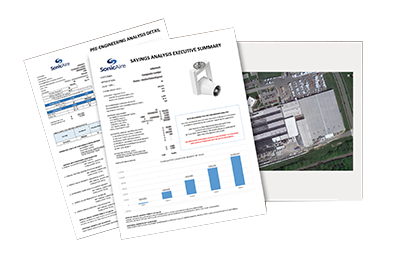As a manufacturer, we know all too well what last year brought for many of our clients. Lockdowns and the pandemic radically shifted what “normal” operations look like.
Unlike service-based businesses, production and processing facilities can’t move fully remote. Critical operations require employees to be in-person, managing the process and equipment, keeping things moving. Meanwhile, some responsibilities don’t demand a physical in-person presence, at least not 100% of the time.
An all-remote workforce requires an organization to change the way it works. The hybrid approach presents its own unique set of challenges.
Managing Remote vs. In-Person
As previously mentioned, facilities such as ours can’t just decide that everyone can work from home. Someone needs to be there to assemble products, run production lines, and manage logistics. Unfortunately, this means that operations staff will need to be in the building. Other staff including accounting, marketing, sales, and customer service, may not need to be in-person depending upon their responsibilities. What about designers or engineers? It likely depends upon the level of interaction required for them to complete their work. If they need access to products and to frequently collaborate with production staff, in-office may be best. Otherwise, they may be able to work remotely as well.

Having remote work policies for some employees and not others can complicate workplace politics. Management must set clear boundaries to make it clear that working remotely doesn’t mean not working.
The ideal way to do this is to set expectations for remote workers just like those in the office.
- If employees are expected to be at their desks working when they’re in the office, the same applies at home.
- Just as they would in the facility, team members should be accessible by phone or some other means of communication when needed.
- Professional work attire should match expectations in the office, especially when participating in video meetings.
- Anyone who isn’t getting their work done or fails to meet expectations should not be allowed to continue working remotely just because it’s more convenient.
By setting boundaries and holding people accountable for their actions, there’s no reason you can’t manage a hybrid workforce in a production or processing facility.
Maintaining Clear Communication
Communication, whether in-person or digital, is key to a company’s success. But when production is required to come into the facility while administrative or management roles are not, how can you maintain clear lines of communication.
In most facilities, walking onto the floor to speak to someone directly about a given subject is still the norm. But what if the manager isn’t physically present? Or an essential party in the discussion is working remotely?
There are ways of proactively managing these situations to maintain clear, effective lines of communication in the facility.
- Limit impromptu decision-making. Small groups often make decisions on the fly, with a few people gathering to make a quick decision. While this can expedite the process, it also tends to leave out key members who may have useful insight. It can also lead to communication breakdowns where some divisions or employees may not find out until well after the decision has been made. So, what should you do instead?
- Schedule regular, agenda-driven meetings. Employees can still discuss ideas at any time, but the team should make decisions during regularly scheduled meetings. Use pre-set agendas to keep the meetings focused and make sure you walk out with decisions made, tasks assigned, and plans to reconvene on any topics not finalized.
- Leverage digital communication methods. Technology can be a benefit or a distraction depending upon how you use it. Modern communication platforms make it easy to connect and chat with someone whether they’re in the office, at home, or in a co-working space.
As with any other situation, setting clear rulesets regarding communication methods and use will make everyone’s jobs easier.
Re-Prioritizing Space
If a portion of your workforce will continue to work outside the office part or full-time, this may be an opportunity to re-allocate space for your organization.
Reduce office space. You don’t need offices for employees who won’t use them. Moving administrative, marketing, and sales functions outside the building could clear a lot of square feet. Instead of holding this space for people who occasionally come into the office, repurpose it for some other use.
- Implement flex office space. Some workers may work remotely part of the time but still need somewhere to set up shop when they come in. Flex spaces give people a temporary spot to work on their laptops, make phone calls, and hold meetings without permanently designating it to any one person.
- Add production/storage. For companies like ours that produce products or process materials, every square foot designated to operations is an opportunity to increase revenue. Repurposing office space into additional production or storage space may give you some extra breathing room and help you meet production requirements more easily.
Reducing Costs without Sacrificing Efficiency
Ultimately, a significant benefit of remote work is the opportunity to reduce overhead costs. If you own the building, there may not be much you can do. But for those leasing space, this may give you the flexibility to find a facility that is better suited for production. Or, given your practice in splitting production and administrative roles, you could discover separate spaces conducive to both groups while cutting costs.
The drawback to this is obvious. What kind of efficiencies are we giving up by splitting our staff? Will distanced communication fail to deliver the same “magic” we found in random interactions in the office?
The answer will differ for each organization and its specific workflow. Just because we haven’t done it before doesn’t mean we can’t do it.
Getting Back to “Normal”?
Some would argue there is no entirely going back to normal. Employees have become accustomed to the short commute from their bedroom to the kitchen table. And there are benefits to the organization as well. It’s much cheaper when you don’t have to maintain extensive facilities.
Additionally, it’s easier to hire and retain talent when it doesn’t matter where they’re logging in. Once upon a time, a spouse moving might have meant losing a valuable employee. No more. Now, it’s simply a change in their employment records and back to work.
B2B industries tend to lag when it comes to digital adoption and market adaptation. If there’s one good thing that comes from the past year, it could be the forced transition towards more modern ways of working together.
Or, we could quickly revert to the old way of doing things. Only time and the decisions your team makes will tell.


 Reduce office space. You don’t need offices for employees who won’t use them. Moving administrative, marketing, and sales functions outside the building could clear a lot of square feet. Instead of holding this space for people who occasionally come into the office, repurpose it for some other use.
Reduce office space. You don’t need offices for employees who won’t use them. Moving administrative, marketing, and sales functions outside the building could clear a lot of square feet. Instead of holding this space for people who occasionally come into the office, repurpose it for some other use.
